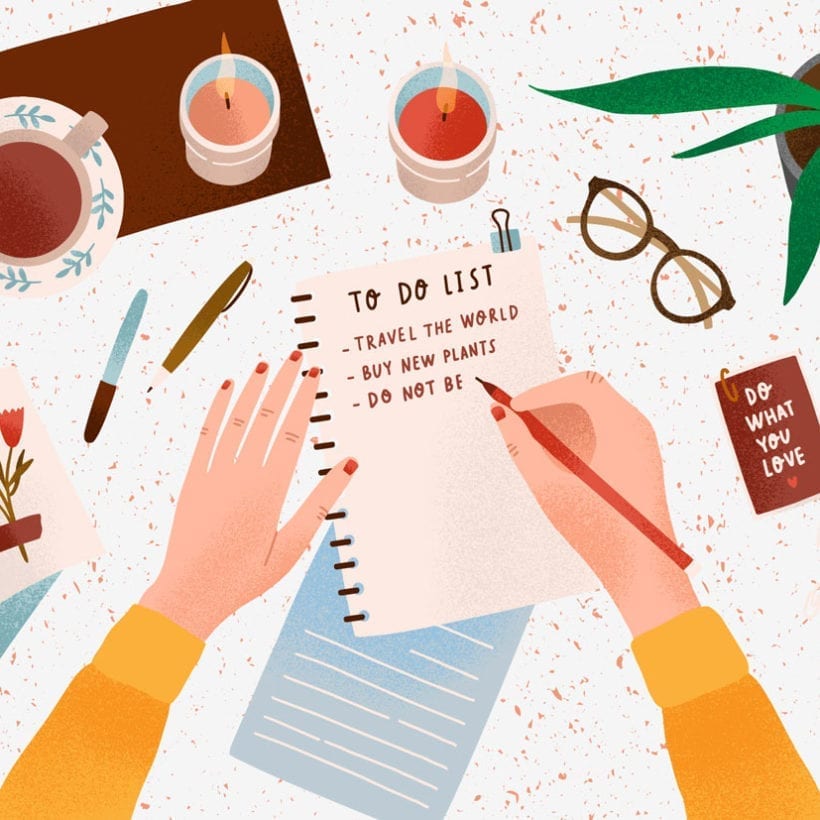Email: a classic case of can’t live with it, can’t live without it. Communicating via email is a necessary part of nearly every job but one that can often zap your time and distract from the actual work at hand. According to management consulting firm McKinsey & Company, the average US worker spends 28% of their working day on email. This amounts to 2.6 hours and 120 emails every single day.
With the current situation driving more of us to work from home and have less face to face conversations, communicating with colleagues, clients and collaborators over email is only set to increase. Considering a healthy work-life balance is even harder to come by, now is the ideal time to form a better relationship with your Inbox and stop those messages dominating your brain space.
Why is getting your inbox under control so important? For business coach Anastasia Wilson, it all comes down to the state of mind: “If you have an overflowing chaotic inbox, you’re likely to feel frantic and disorganised. By adopting organisation habits, it helps you manage your time better and in a way that’s on your terms, giving you a feeling of accomplishment rather than the familiar feeling of a neverending inbox.”
There are multiple methodologies and schools of thought when it comes to inbox sorting but at the end of the day, it’s all about finding one that works for you. These are the factors worth taking into account…
Try the traffic light formula
Abigail Barnes, a Time Confidence Coach, advocates a traffic light system for assessing the importance and urgency of an email and the time frame it needs to be dealt with. “Green is emails that directly relate to your job or generate revenue for your business, these need a reply that day. Amber are emails that relate to a project, activity or client, but don’t necessarily need a reply today while red email doesn’t relate to your job or revenue generation and therefore needs to be delegated or deleted.” With this system in mind, working through your inbox can be done at a much quicker speed.
Turn off email for focused periods
The biggest issue with email is the distraction it can cause. If you are trying to focus on a task, email alerts are distracting and can pull you away from the tasks you need to get done. “It takes twenty minutes for the brain to focus on an activity, and twenty minutes to fully refocus if distracted. Email is one of the main forms of distractions for people whether working in the office or from home,” Barnes explained. “If you want to increase your productivity, you’ll need to improve your ability to focus undistracted for longer periods of time. 60-90 minutes is recommended,” she added. Subsequently, if you wish to power through a task, it is better to close your email window and alerts (both on your computer and smartphone) and concentrate solely on said task.
OOO messages aren’t just for vacations
If you’ve turned off your email to concentrate solely on one task, it’s important to notify anyone who might need you urgently during that time. Using an auto-response message to notify the relevant people is one way of doing so. Something like “I am working on X and not checking emails this afternoon. Please Slack/WhatsApp me for anything urgent.” An OOO message can also be a useful way to stop the large influx of emails. A carefully crafted auto-response email can answer frequently asked questions, direct people to pages on your website, alternative inboxes or colleagues and give people a time frame that you are likely to respond to.
Schedule email answering time
While being off an email is not possible in some job roles, where possible limiting the number of times you check your email is helpful when it comes to avoiding distractions or procrastinating.
“Schedule key times during the day to review your emails so you are not dipping in and out of them and interrupting your tasks. Check your emails at the start of your working day and deal with anything urgent and then file everything else to deal with later in the day. Review again just before lunch and midafternoon to make sure there is nothing urgent. Then at the end of the day do a final sweep before you shut down for the evening,” Anji McGrandles, a workplace mental wellbeing expert and founder of The Mind Tribe, recommended.
Unsubscribe more
The best way to streamline your inbox? Unsubscribe from all those marketing newsletters you never read. McGrandles advises setting up a filter to automatically detect incoming emails that contain the word ‘unsubscribe’ to direct them straight to a separate folder. Or, simply search ‘unsubscribe’ in your inbox and go through the list of emails unsubscribing from lists you no longer want marketing communication from.
Don’t email out of hours
When it comes to achieving a sensible work-life balance (especially when working from home), setting boundaries with email is crucial. “Don’t check emails first thing in the morning or just before bed,” McGrandles suggested. Doing so will only start or finish your day on a stressful foot. Plus, it doesn’t give the best impression. “Don’t email colleagues or clients late at night, it sets a precedent and puts pressure on your team to respond. It can also look like you can’t manage your time or workload in office hours,” McGrandles added. If you do need to send an email out of hours or from a different time zone, try an email scheduling setting like Gmail’s Boomerang function.

Embrace delete button
It can be easy to fall into a trap of hoarding emails ‘just in case’ but doing so leads to a cluttered and often overwhelming inbox. Instead, be ruthless with what you keep. “Honestly, the delete button in emails is so underused. It takes some practice but really being honest with yourself if you’ll ever need this or look at it again can free up so much space,” Wilson stated.
Cut back on cc’ing
Overzealous cc’ing only perpetuates the problem of endless email further. No one wants to be stuck in a lengthy email chain that’s not relevant to them. “The only loop in the people who need to know and encourage your team to do the same,” McGrandles suggested. Similarly, remove people from cc once they are no longer needed.
Use time-saving apps
Utilizing organisation apps can help minimise the number of emails that need sending.
“I had a client who didn’t use a calendar booking facility or a task management software and the bulk of his emails were just back and forths from people trying to arrange a time with him or give him a task. We got him on Calendly integrated with Google Calendar and using Basecamp and those long conversations were no more,” Wilson commented. Apps like these, designed to decrease email use, automize processes that can be lengthy over email.








